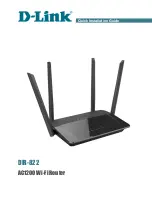
ATM frame user−network interface (UNI), or System Network Architecture (SNA).
The MGX 8240 Private Line Service Gateway is designed to terminate private lease lines (T1, T3, or DS0). It
has 16 slots with 1 reserved for a redundant control card. It can support up to 1,260 channelized T1s. It is
designed for large Internet service providers (ISPs) to aggregate dial−in traffic, which is delivered by the local
central office’s Class 4 or Class 5 switch in a T1 or T3 interface. The combined traffic is delivered to the
broadband network via OC−3 trunk ports.
The MGX 8260 Media Gateway is a high−density, carrier−class gateway for voice and data traffic. It is
designed to move data traffic from voice line to packet network. It can also function as a Voice over IP (VoIP)
gateway. The chassis has 14 slots for interface modules and 2 slots for switch control cards. A fully
configured system has over 16,000 VoIP ports. The gateway has advanced voice features: echo cancellation,
dynamic de−jitter, Voice Activity Detection (VAD), Comfort Noise Generation (CNG), and announcement
play−outs (AU or WAV files). It can connect to the broadband network via six broadband service cards
(BSCs). Each BSC has six channelized DS3 interfaces.
IGX 8400 Series
The IGX is the successor to the IPX switch. It was the first commercial implementation of Cisco’s fastpacket
cell technology. It employs fixed−length cells for switching all types of traffic (voice, data, and Frame Relay).
The IGX adds a higher bus capacity, a higher access rate, and ATM. The series has three models:
IGX 8410—Has 8 slots with 2 reserved for redundant processor modules.
•
IGX 8420—Has 16 slots with 2 reserved for redundant processor modules.
•
IGX 8430—Has 32 slots with 2 reserved for redundant processor modules.
•
One of the major differences between the MGX and IGX series is the trunk ports. The IGX can use any of the
module interfaces as the trunk connection to an edge device. The speed ranges from 256Kbps to OC−3. The
IGX also has advanced switching and routing capabilities: It uses a distributed intelligence algorithm to route
new connections and react to failures in transmission media. It provides full control of network resources with
multiple classes of service, and it can provide different QoS to individual applications.
Each of the service modules has a large buffer. The ATM module can buffer 128,000 cells, and the Frame
Relay can buffer 100,000 frames. The buffer can be allocated by QoS to each virtual circuit based on the
amount of traffic and service−level agreements.
The IGX is marketed to the enterprise as its core WAN switch. The ability of the IGX to switch and route
between multiple trunks enables it to connect a large number of sites. The capability to handle voice, data, fax,
and video traffic in a single network minimizes the overall expense for the enterprise.
IGX is also marketed to carriers in situations where there is not enough traffic to justify purchasing a
high−end WAN switch (such as a BPX). It enables the carrier to gradually increase the capacity of the
network.
Note
Another Cisco product that belongs with the IGX (but that is not considered a WAN device) is
the MC3810 Multiservice Concentrator. It has the same switch technology as the IGX series. It
utilizes the Cisco Internetwork Operating System (IOS) for configuration commands. The
MC3810 can combine data, voice, and video traffic into a channelized ATM T1/E1.
BPX 8600 Series Wide−Area Switches
The BPX 8600 series, first introduced in 1993, is the flagship of the Cisco WAN switch line. It is designed to
function as the core of the WAN ATM network. The series has three models: BPX 8620, BPX 8650, and BPX
8680. All three models have the same chassis type with 15 slots; 2 slots are reserved for redundant control and
switch modules, 1 slot is reserved for an alarm status monitor module, and 12 slots are reserved for interface
modules.
58
















































